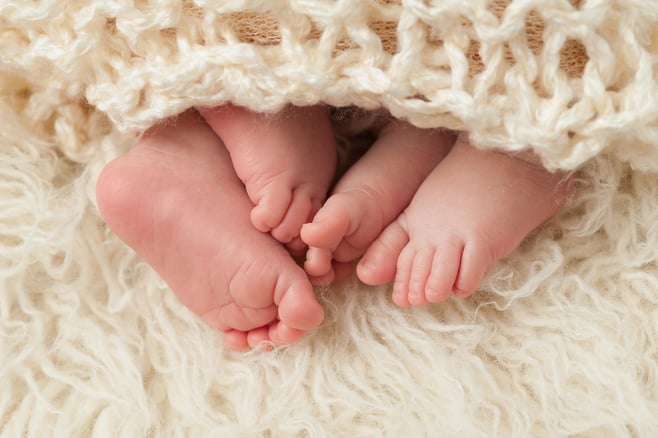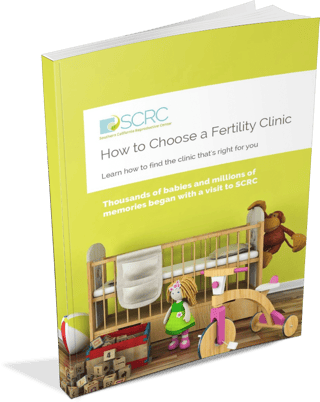
From the moment Beyonce Knowles announced that she and her husband were expecting twins, the media began speculating whether her multiple pregnancy may be the result of IVF. The couple has never commented on whether they sought assistance from fertility experts when they decided to grow their family, and their privacy is to be respected. Beyond the realm of celebrity gossip, however, the rumours have created an opportunity to discuss common misunderstandings about IVF and multiple births.
Does IVF cause twins?
The short answer to this question is no. The process of IVF, in and of itself, does not necessarily lead to a substantially higher risk of multiple pregnancy. In practice, the answer is slightly more nuanced. Statistically, women who undergo IVF have multiple pregnancies (twins, triplets, or higher-order multiples) at a higher rate than women who conceived naturally: According to statistics published in 2013, around 40% of all IVF pregnancies in the US resulted in multiple births. That is a concerning percentage, especially when compared to the natural occurrence rate of 2% in the general population.
The main reason for this is the practice of transferring more than one embryo at a time in an IVF cycle. Until recently, most fertility doctors routinely transferred multiple embryos in the hope of achieving a better chance of success. The reason for this is that many embryos have chromosomal abnormalities which mean they are not actually viable. This is true whether the embryos are conceived naturally or through IVF. Because egg quality tends to decline over the years, the proportion of abnormal embryos generally goes up as a woman ages. Placing two or more embryos into the uterus at a time was thought to increase pregnancy rates, with the hope that at least one would survive. Quite often, more than one embryo will successfully implant, resulting in a multiple pregnancy.
What are the risks of multiple pregnancy and birth?
Twins or triplets are often a cause for joy, especially if you have waited a long time for a baby. The dream of "two for the price of one" may be extremely attractive as you face the physical, emotional, and financial investment of undergoing IVF. The reality, however, is that a multiple pregnancy carries considerably higher risks for both mother and babies. Pregnancy complications occur at a significantly higher rate in multiple pregnancies, including:
- Preeclampsia
- Gestational diabetes
- Intrauterine growth restriction (IUGR)
- Placental abruption
- Fetal demise/loss
The birth itself can also present dangers such as:
- Higher rates of Cesarean birth
- Preterm labor/deliver
- Low birth weights
The long-term health complications for preemies and low birthweight babies can be serious, and in some cases, life-altering. Most multiple pregnancies can be safely managed with close monitoring by your medical team, but doctors take these additional health risks seriously, and generally prefer to do what they can to make it less likely that an IVF cycle will result in a multiple pregnancy.
How can I minimize my risk of having twins?
Most leading fertility experts now consider elective single embryo transfer (eSET) to be best practice for most IVF cycles. You may have produced a large number of eggs during the ovarian stimulation process, and may have a number of viable embryos available, and your doctor may still suggest that you transfer only one (freezing the rest for any future IVF cycles.) There are several reasons for this:
- Technology has made it easier to select a high quality embryo for transfer.
New developments in embryology have made it possible for experts to identify which embryos have the highest likelihood of success. This is reassuring to many patients. The ability to choose a high quality embryo takes away a little of the emotional pressure you may feel at the thought of transferring "only one."
- Genetic testing.
Sophisticated genetic tests such as preimplantation genetic screening (PGS) and preimplantation genetic diagnosis (PGD) mean that the lab can pinpoint the type of genetic abnormalities that often cause miscarriage. These tests are quite safe and can be performed with minimal risk to the embryo. PGS screens for aneuploidies, which are missing or translocated ("scrambled") chromosomes. PGD allows embryologists to get a complete picture of an embryo's chromosomal makeup, and is often used to ensure that the embryos are free of specific serious genetic conditions such as Tay Sachs Disease or cystic fibrosis.
- Time lapse-photography
The Embryoscope is a cutting-edge incubator which makes it much easier for the lab to choose the healthiest available embryo for transfer. It does this in a few ways. First, a time-lapse camera takes photographs of the culturing embryos every five minutes, combining them together into mini movies for the expert to watch. This allows the lab to monitor the growth and development of the embryos without ever removing them from the ideal environment of the incubator. This cuts down on any potential exposure to harmful substances in the air or changes of light and temperature which could be a risk to a developing embryo.
The other benefit of this close monitoring is the ability to compare an embryo's rate of development to an enormous database. Machine-learning algorithms are combing through the data, and can point out the timing of crucial moments in development (such as cell splitting) which correlate to a positive or negative outcome. This is another way for the lab to discover which embryos have the best chance of resulting in a healthy pregnancy.
- Blastocyst transfer.
Standard IVF practice has been to transfer embryos after about 3 days culture in the lab, but increasingly doctors and patients are opting for blastocyst transfer instead. A blastocyst is an embryo which has been incubated in the lab to the "blastocyst stage" which occurs 5 to 6 days after fertilization. Advances in lab technology, such as better culture mediums, have now made it possible to keep embryos healthy in the lab for that long. This has some unique benefits which are likely to contribute to a higher success rate.
- The extra time allows the lab to identify the unhealthy embryos which are unable to reach the blastocyst stage, making it less likely that an unhealthy embryo will be implanted.
- In natural conception, a 3 day old embryo would still be in the environment of the fallopian tube, not the uterus. Waiting until it is 5 to 6 days old allows the transfer to be performed in "perfect timing," as this is the stage at which the embryo is ready to implant in the lining of the uterus.
- Transferring one embryo is as likely to result in pregnancy as a multiple transfer.
A recent study took a look at whether the number of embryos transferred in an IVF cycle had an effect on the live birth rate. Their analysis showed "little to no effect on clinic-level live birth rates with increasing rates of eSET." The percentage of multiple births dropped with eSET, but the percentage of live births did not.
- IVF may actually have a higher chance of success with just one embryo.
Another study discovered that transferring two embryos can reduce a patient's chance of pregnancy by almost a quarter, if one of the embryos was of lower quality. This is a particularly important point. Before transfer, all the available 3 day embryos which resulted from the IVF cycle are graded according to quality, ranging from 1 (the best, with all cells of equal size and no sign of fragmentation) down to 5 (the least promising grade, where cells may be uneven in size and there may be moderate to heavy fragmentation.) Generally, the higher an embryo's grade, the better its chances of implantation. When doctors transfer multiple embryos, they generally select the highest-quality available, but this may mean a variety of grades. What the study found was that instead of increasing the likelihood of pregnancy, the poorer-quality embryo may actually compromise the pregnancy. The results of the study revealed that when compared to eSET, a two embryo transfer with one good quality embryo and one poor quality embryo resulted in a 27% lower pregnancy rate. The researchers suspect that the poor quality embryo may cause the body to reject the pregnancy at the expense of the healthy embryo.
Every IVF cycle is unique, and there is no one answer that is right for everyone. You and your doctor will be able to assess the risks and weigh the benefits of eSET vs multiple transfer in your case. There are some cases where fertility doctors may still choose to transfer more than one embryo,often in cases where a patient is older and has had multiple failed attempts. If that does result in a multiple pregnancy, a good Los Angeles fertility clinic can keep a close eye on you during your early weeks and help you transfer your care to an obstetrician with experience handling higher-risk care such as multiples. No matter what, the end goal is always a healthy mother and a healthy baby (or two) at the end of your pregnancy.
Share this on social media:




